
Among the fastest-growing field in the discipline of Data Science is Artificial Intelligence. However, the knowledge of the theoretical and mathematical aspect of Artificial Intelligence is not enough and in order to come up with any tangible results, it is imperative to know about how to put AI to use.
Just like for the discipline of Statistics, there is Applied Statistics that deals with the practical application of all the concepts of it, on a similar line, when it comes to Artificial Intelligence, there is a separate field of study known as Applied AI that deals with using the various concepts of AI and coming up with different programs, applications and software that solves numerous business problems.
Applied AI: The art of using AI
In order to understand Applied AI, the prerequisite is to know what does Artificial Intelligence means. Among the plethora of definitions that are available out there, the simplest understanding of Artificial Intelligence is that it is a subset of Data Science that tries to solve various business problems that are often predictive in nature by using concepts of Deep Learning or Machine Learning.
If the AI model uses Deep Learning (and this is something AI is mostly associated with), the concept of multi-layered numeral networks comes up where various weights are used to tweak the working of the model and make it more accurate. Here an architecture that mimics the working of a human brain is used. Therefore, rather than using a statistical, probabilistic, rule-based or hyperplane based method (i.e. the traditional models), Deep Learning algorithms used neurons to come up with results.
However, one must remember that Machine Learning which often is treated as a separate field of study can also form a part of Artificial Intelligence as it is often quoted that when people talk about Machine Learning, in a broader context they are talking about AI only.
Here the models work under Supervised, Semi-supervised or Unsupervised Learning Setup (unlike Deep Learning models that work in a Reinforcement Learning Setup).
With the meaning of AI being clear, it becomes much more easy to understand the meaning of Applied AI. The study of the various (mostly commercial) applications of the AI models can be understood as Applied AI.
Here, it is expected that the person has a decent understanding about the theoretical aspects of the AI (Deep Learning and Machine Learning algorithms) and the focus is on – What are the fields of application, Where it can be applied and How it is to be applied.
You may also like to read: 101 of Artificial Intelligence – What to know as a beginner?
A Brief History of Applied AI
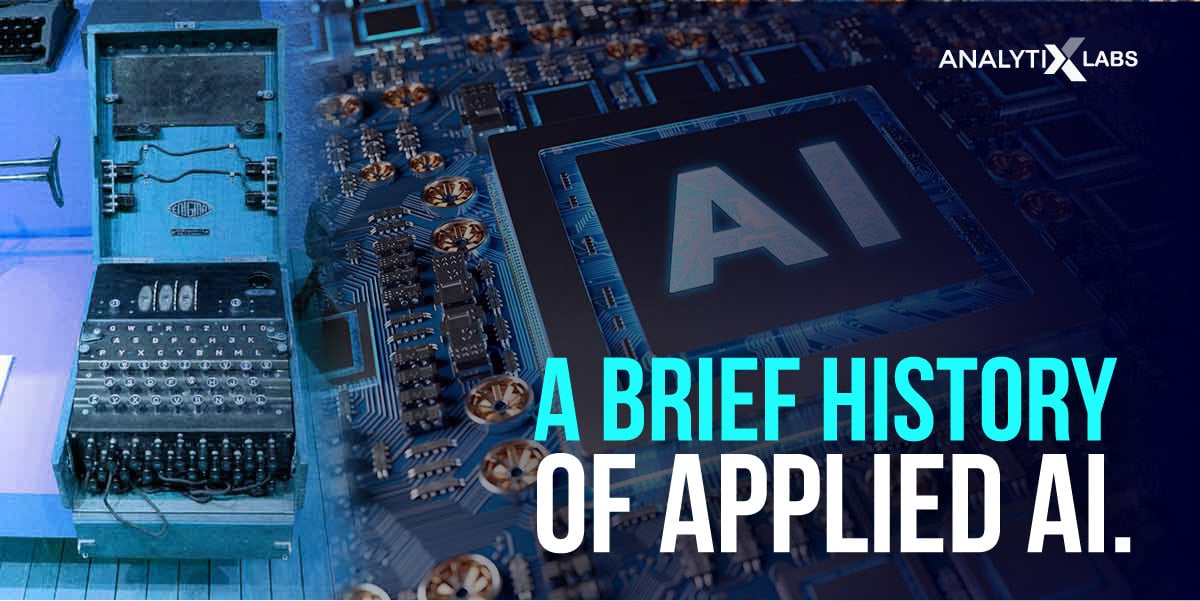
AI has moved from programming everything explicitly (known as the symbolic or top-down approach) to provide the answers to the machine and let machine come up with a set of program that it uses to come up with a result (known as the connectionist or bottom-up approach).
In recent times, the latter approach is considered as synonymous with AI and this is something that has caused such advancement in the field of AI which is mainly because of the recent revolution in the computing power and introduction of powerful GPUs etc.
Initially, the rudimentary and primitive AI models used more of a brute-force method where all the combinations were tried out in order to come up with a result. The earliest example of this was Alan Turning’s Bombe which helped in deciphering the German’s Enigma-machine-encrypted secret messages during World War II. It was predicted by turning that one-day computer will be able to beat humans at chess and in less than 60 years the same happened.
After few concepts where Machine Learning was put to use such as Shopper written by Anthony Oettinger where the machine started showing memory building or the “virtual” rat, a software that John Holland wrote as a test software for the prototype of the IBM 701 computer showcased how the bottom-up approach was efficient too.
Finally, in 1997, a Chess Computer created by Deep Blue was able to defeat reigning world champion, Garry Kasparov, in a six-game match. This could have only been possible if the computer was able to narrow down the possible number of moves and learn from the past experience. This method still relied on brute force and may not be called as AI from modern standards, however, it opened the world of possibilities for AI. With this and especially after the revolution in the computing power, the commercial use of AI came in forefront.
The Application Areas of AI
As mentioned earlier, the study of the usage and application aspect of AI is Applied AI and there are a number of fields where AI can be applied. Among these are Natural Language Generation, Chatbots, Speech or Image Recognition, Sentiment Analysis.
In today’s world, the application of AI is almost omnipresent. It is used in various business organization such as in the creation of CRM platforms that allows better customer handling and leads to better customer satisfaction.
AI has also kept its traditional application areas of Automation where the repetitive task has to be performed and here AI can do it more efficiently rather than simply hard coding everything.
AI application areas now include those domains where the use of it previously was unheard of such as Marketing where it is used to predict the right advertisement among other things, Education where it helps in deciding the course curriculum, solving basic queries etc, Law where the use of Chatbots is in high demand among other domains including Cyber Security (threat detection), Finance (analysing trade trends), Manufacturing (logistic support), Healthcare (early detection and quick diagnoses of disease).
There are also several other companies that produce specialised software that solely rely on AI such as motion detection sensors, Image Recognition software used by Law Enforcement agencies, Self Driving cars that use motion detection with Image recognition.
Technologies Developed by AI
The above mentioned numerous application areas of AI has led to the development of separate technologies that are used to solve the various business problems. Among them, the most common one are Computer Vision, Machine Learning, Natural Language Processing etc.
Computer Vision: Computer Vision is a specialised form of something known as Machine Vision. The idea of Machine Vision is to enable a machine to “see” the world around them the way humans see it. The idea is to capture the world through hardware (cameras etc.) and convert the captured images into a form that then the computer can understand, process and use them to come up with meaningful results.
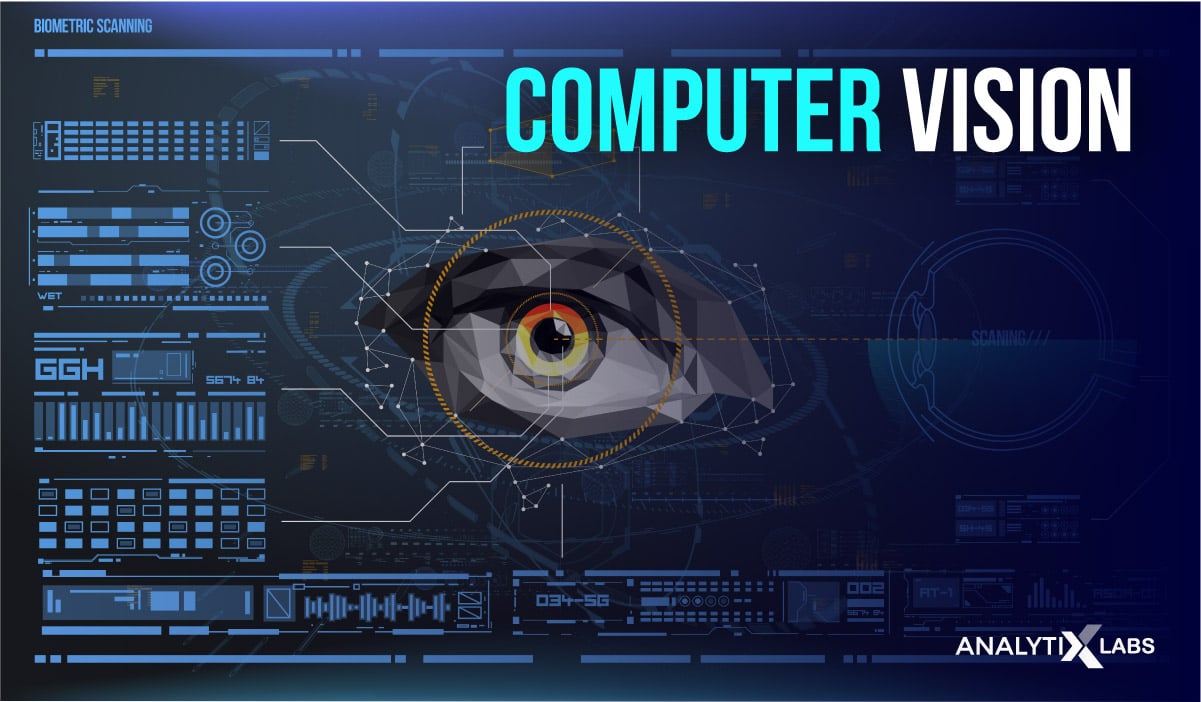
Computer Vision here stands for the processing of images which are then can be used to analyse the images. In modern times, both the terms have become interchangeable and so, Computer or Machine Vision is that technology through which we work with Images.
When it comes to AI, the most common is the use of Deep Learning methods especially the Convolutional Neural Networks in order to perform the various tasks where Computer Vision is deployed. Along with this, there are Machine Learning methods also that are used especially in solving Image Classification problem (among the most famous is the use of Support Vector Machines for solving binary Image Classification problems).
The application areas the solely or for a large part deploy the Computer Vision Technology include Medical Image Analysis for identifying possible diseases and presence of certain microorganisms in blood, Facial Recognition used by many companies as a substitute to traditional attendance marking mechanism, Authentication of Signature which is something used by Banks and the obvious wide-scale deployment of this technology in the Self Driving cars.
Machine Learning: AI is comprised of Machine Learning and Deep Learning. When we talk about Machine Learning as technology then here the Machine Learning aspect of memorizing, constant improvement, remembering past behavior, and adaption to new scenarios are used. Here unlike Computer Vision which predominantly uses Deep Learning methods, Machine Learning modules are mainly used.
Application areas include anything where past behavior of people or any other subject is used to predict the future of them or similar subjects. For example, in order to predict if a particular person will be able to repay the loan, Machine Learning technology is deployed where a number of Machine Learning algorithms are used to identify the patterns among the historical customers and their eventual repayment of the loan. Here, rather than hard-coding some rules, the machine is made to learn from the past and predict if a particular person will be able to repay the loan based on his/her credentials.
The good part about this is that as the patterns in the population change, so do the method of predictions as nothing is hardcoded (i.e. nothing is fixed or permanent, however, re-training of the model is required).
Machine Learning modules here are directly used as a part of Applied AI as various ML algorithms such as Linear Regression, Logistic Regression, K Nearest Neighbor, Support Vector Machines are used to make the machine learn from the data. As far as Deep Learning methods are concerned, Artificial Neural Network is the most common Deep Learning algorithm that is used in Machine Learning technology.
Natural Language Processing: Among the most famous technologies developed for the Application of AI is NLP (Natural Language Processing). Unlike Computer Vision which used a camera and performed analog to digital conversions and processing of images, here NLP has to deal with text and the conversion is from characters to numbers which can be used to meaningfully represent the text.
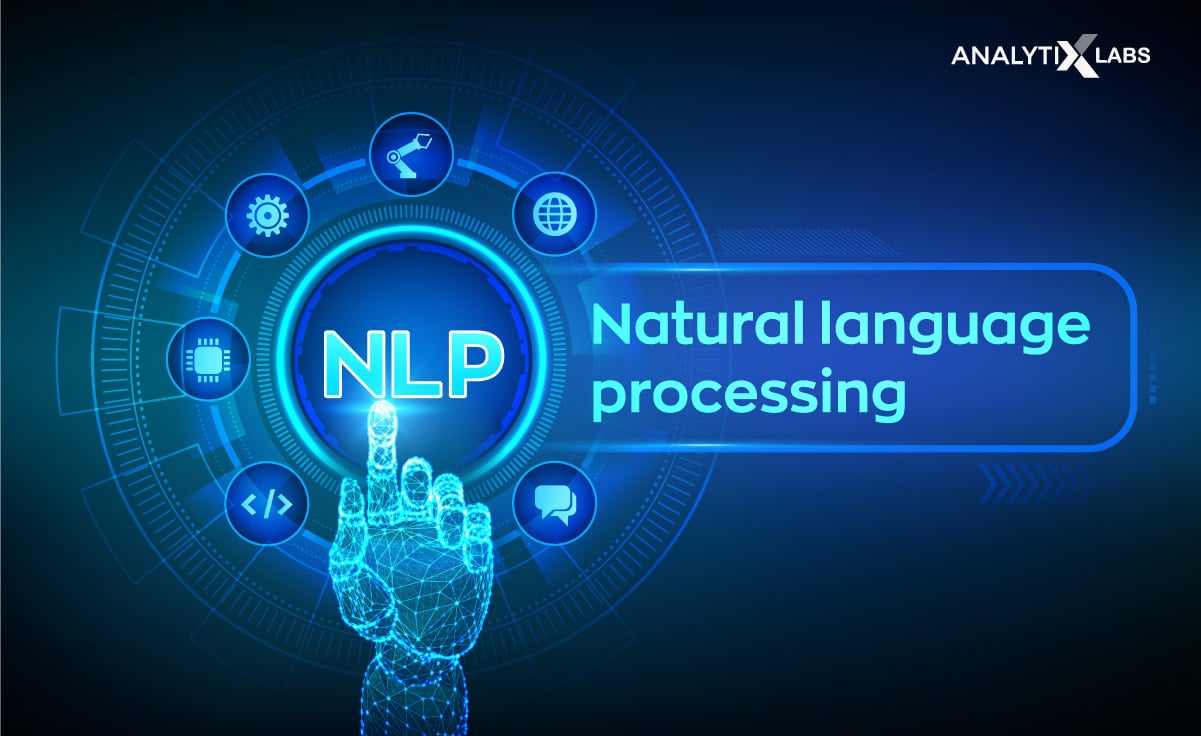
NLP includes the study of languages, grammar, vocabulary, colloquial terms etc along with the analysis of a text such that meaningful results can be found. The application areas of it include Chatbots which are now deployed almost all sectors of Business, Text Generation, Sentiment analysis etc. Among the most common algorithms that deal with NLP are Naïve Bayes and Recursive Neural Networks.
The Way to Learn Applied AI
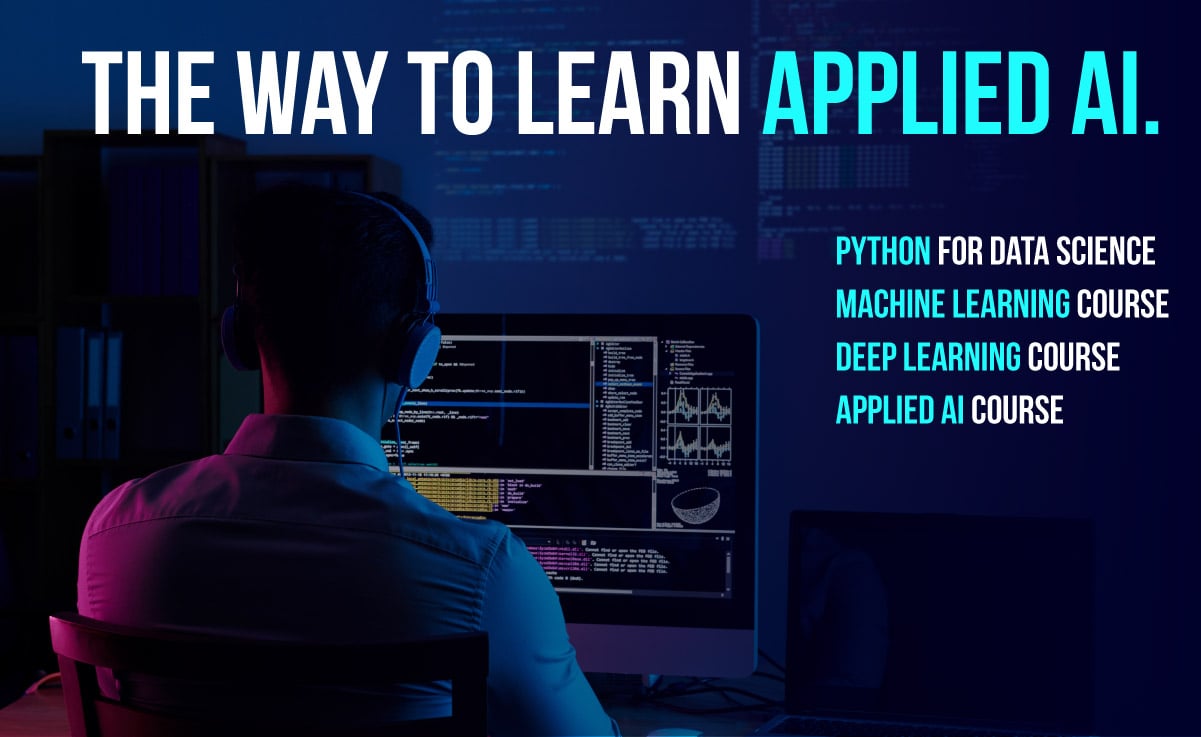
Python for Data Science: To apply Artificial Intelligence based algorithms, first it is important to know a language in which these algorithms can be written or pre-written algorithms can be deployed. Among the various languages, python is the most widely used language especially when it comes to Data Science.
A good number of artificial intelligence algorithms are available in python and are developed in python on a wide scale which makes it even more important. Thus, to start with Applied AI, the first step would be, to begin with learning Python.
Machine Learning Course:
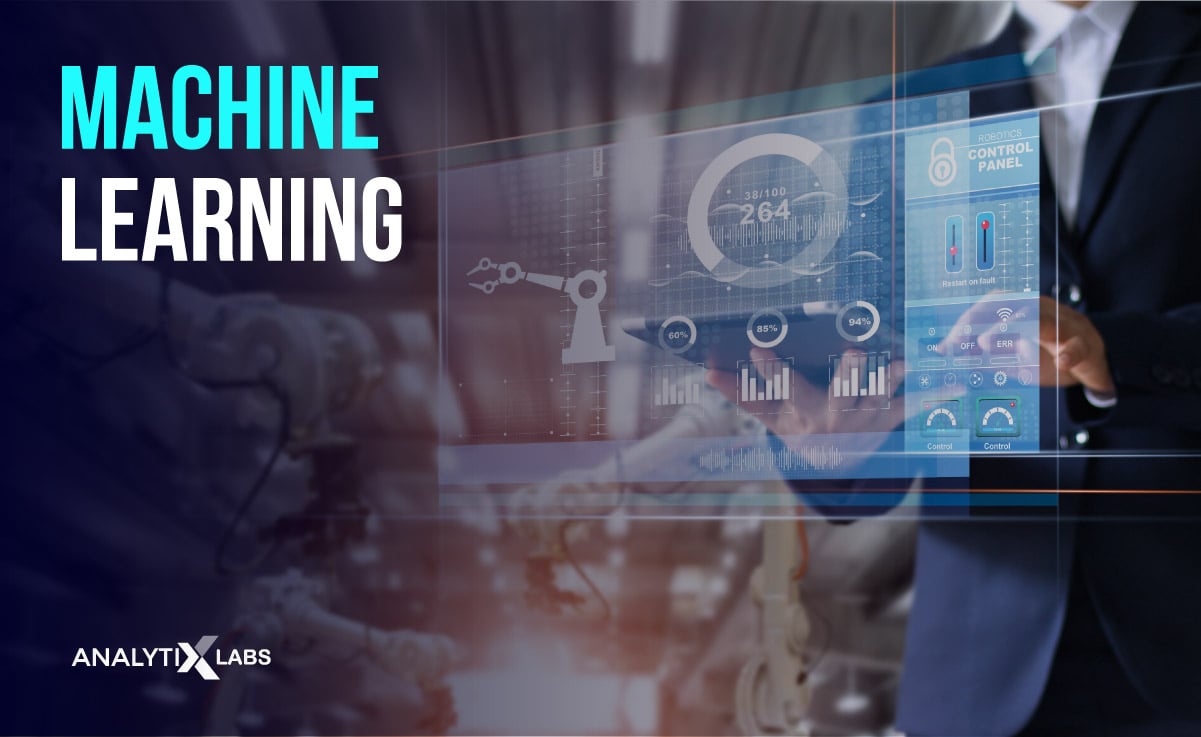
As mentioned earlier, for understanding Applied AI, one has to know AI and for understanding AI, the two core components are Machine Learning and Deep Learning. The initial step after having some understanding of python is to understand the concepts of Machine Learning.
Here one has to look for a best machine learning course that suits the candidate such that it covers all the aspects of ML algorithms i.e. from theoretical (intuitive as well as mathematical) as well as the application part of it (deploying ML algorithms using languages such as Python).
Deep Learning Course: After getting the understanding of Python Programming for Data Science and the usage of Machine Learning algorithms, one can focus on the Deep Learning architecture and the workings of an algorithm that work in a Reinforcement Learning setup.
Here a good course would be that explains the various architectures of Artificial Neural Networks, Recurrent Neural Networks, Convolutional Neural Networks etc.
Applied AI Course: A good Applied AI course would be that either specifically asks the candidate to know all the above-mentioned as prerequisite (knowledge of Python for Data Science, Understanding of Machine and Deep Learning modules) or it explains all of this from the scratch along with explaining the various application areas of AI and the technologies associated with it.
Here a course should be able to provide the candidate with: sound statistical and mathematical background of the algorithms with the intuition behind them, the correct way of performing Exploratory Data Analysis, Data Cleaning and Data Mining.
When it comes to the different application areas and technologies associated with it, the course should be able to provide with the common workflow for dealing with each of the problems, the common mistakes that people might make and a good understanding of the end goal so that the application is efficient. Along with this, other things such as Assignment, Case Studies, Projects and Placement Assistance should also be of good quality.
The knowledge of a computer language, theoretical knowledge of Machine Learning and Deep Learning algorithms or the understanding of the various application domains of AI is not enough in today’s day and age.
What is required is to combine all this knowledge and only then one can become part of Applied AI as having isolated knowledge can be of no use. Once the different aspects of Applied AI are understood, one can then choose to go in-depth in a particular field such as Self Driving Cars, Robotics, NLP, Computer Vision, Machine Learning for predictions etc.
You may also like to read:
1. Data Science vs Machine Learning vs AI Deep Learning – What is the difference?
2. A Practical Approach to Artificial Intelligence Course Syllabus








1 Comment
I was just browsing through the internet looking for some information and came across your blog. I am impressed by the information that you have on this blog. It shows how well you understand this subject. Bookmarked this page, will come back for more.